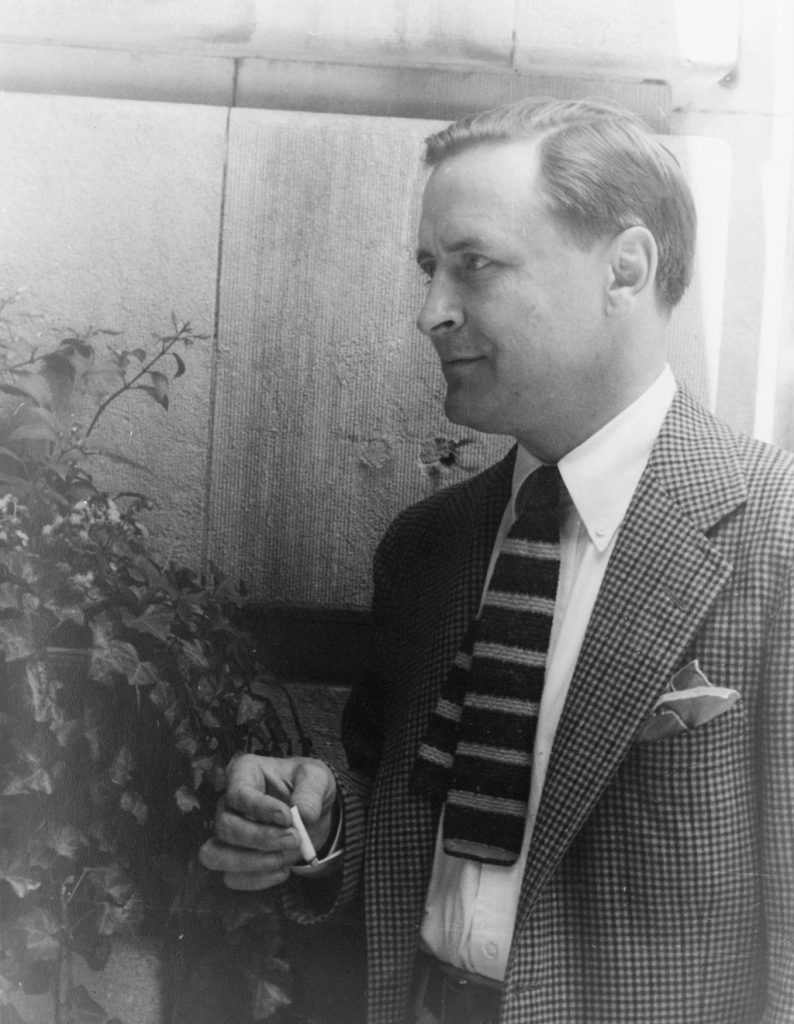70 F. Scott Fitzgerald (1896 – 1940)
Amy Berke; Robert Bleil; Jordan Cofer; and Doug Davis

Photographer Car Van Vechten
Wikimedia Commons
Public Domain
F. Scott Fitzgerald was born in 1896 to a comfortable, solidly middle-class family in St. Paul, Minnesota. A social and cultural beneficiary of the Gilded Age, Fitzgerald’s family did not enjoy the prominence and ease of the Carnegies, the Vanderbilts, or the Rockefellers, but in the fluidity of the 1890s a young man like Fitzgerald could, with the right manners and reading, pass among the wealthy without causing much of a stir. In an era when the ultra-rich and the working poor were separated by an unbridgeable chasm, Fitzgerald’s modest means still placed him closer to the rich than the poor. Fitzgerald was nevertheless acutely aware of the shortcomings of his limited means and his Midwestern heritage. In his stories and novels, Fitzgerald returned time and again to three areas: money, unattainable love, and individual identity. The three short stories selected here present these themes in abundance.
Fitzgerald’s short fiction has been overwhelmed by interest in his novel The Great Gatsby, but Fitzgerald survived by writing short stories for popular magazines like the Saturday Evening Post, Metropolitan, and Cosmopolitan. The selections that follow, each from the first decade of Fitzgerald’s career, show his development as a writer of social fiction, and they allow us to understand his longer works in a new light. In “The Rich Boy,” a story from 1926 and not reprinted in this collection, Fitzgerald clearly describes the project of his short stories:
Begin with an individual, and before you know it you find that you have created a type; begin with a type, and you find that you have created nothing. That is because we are all queer fish, queerer behind our faces and voices than we want any one to know or than we know ourselves.1
These lines are particularly important to understanding Fitzgerald because they remind us that his characters are not intended to represent anything larger than the essential character. While Gatsby may be great, his story is uniquely his own and unrepresentative of any other industrial baron, brewer, or bootlegger of the 1920s. Thus, Fitzgerald portrays his most famous character through the eyes of a single, flawed narrator. We are not meant to know all of Gatsby’s secrets, and, by not knowing his secrets, the story of Gatsby’s rise and fall is both individual and universal.
Later in “The Rich Boy,” Fitzgerald’s narrator offers one of the most memorable and misquoted passages in American literature:
Let me tell you about the very rich. They are different from you and me. They possess and enjoy early, and it does something to them, makes them soft where we are hard, and cynical where we are trustful, in a way that, unless you were born rich, it is very difficult to understand. They think, deep in their hearts, that they are better than we are because we had to discover the compensations and refuges of life for ourselves. Even when they enter deep into our world or sink below us, they still think that they are better than we are. They are different.2
The essential differences of the rich fascinated Fitzgerald and his readers. Throughout the 1920s, the rich and mysterious filled dozens of short stories that enabled Fitzgerald to marry Zelda Sayre, a Southern debutante, and to start a family. But constant exposure to the rich, without being rich, took its toll on both of them. The three stories here: “Bernice Bobs Her Hair,” “Winter Dreams,” and “The Diamond as Big as the Ritz,” are ultimately stories of disillusionment with a strong moral center. Filled with wonder and caution, these three stories blend realism and fable into a uniquely modernist take on wealth, love, and success.
The first of our stories, “Bernice Bobs Her Hair,” developed out of an actual letter that Fitzgerald wrote to his younger sister Annabel when she was a teenager. By the second decade of the twentieth century, Fitzgerald already had deep exposure to the wealthy that he would later write about, and in this early letter, he gives his sister advice meant to ease her transition into society. As we can see from the story, that transition into society required a sufficient degree of caution and self-protection. The second and third of our selections, “Winter Dreams” and “The Diamond as Big as the Ritz,” explore themes that are more closely related to Fitzgerald: young love between a rich girl and a middle-class boy. In both stories, however, the moral compass is very clear: the Midwesterner who stays true to his values will survive even as his romantic heart is damaged. Although each of these stories is from the early years of Fitzgerald’s career, readers will surely recognize these themes and their distinctly American ethic and tone.

